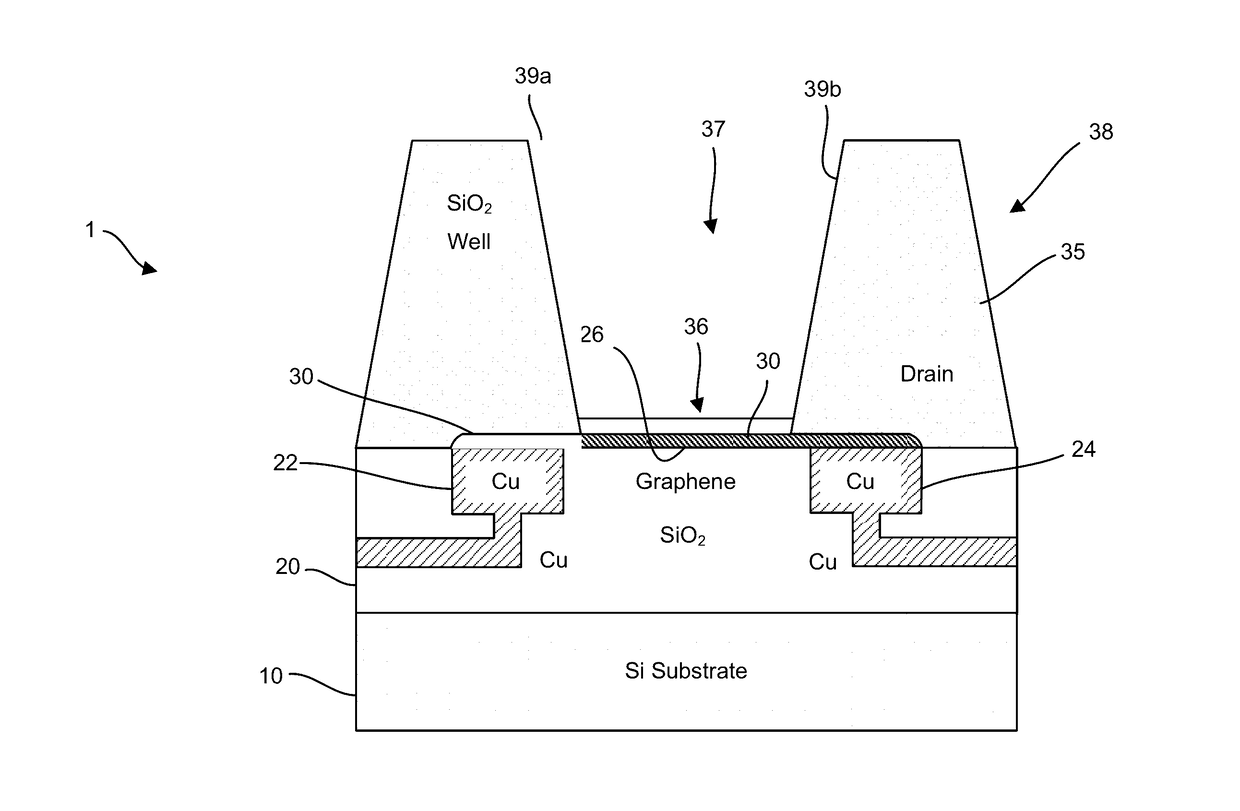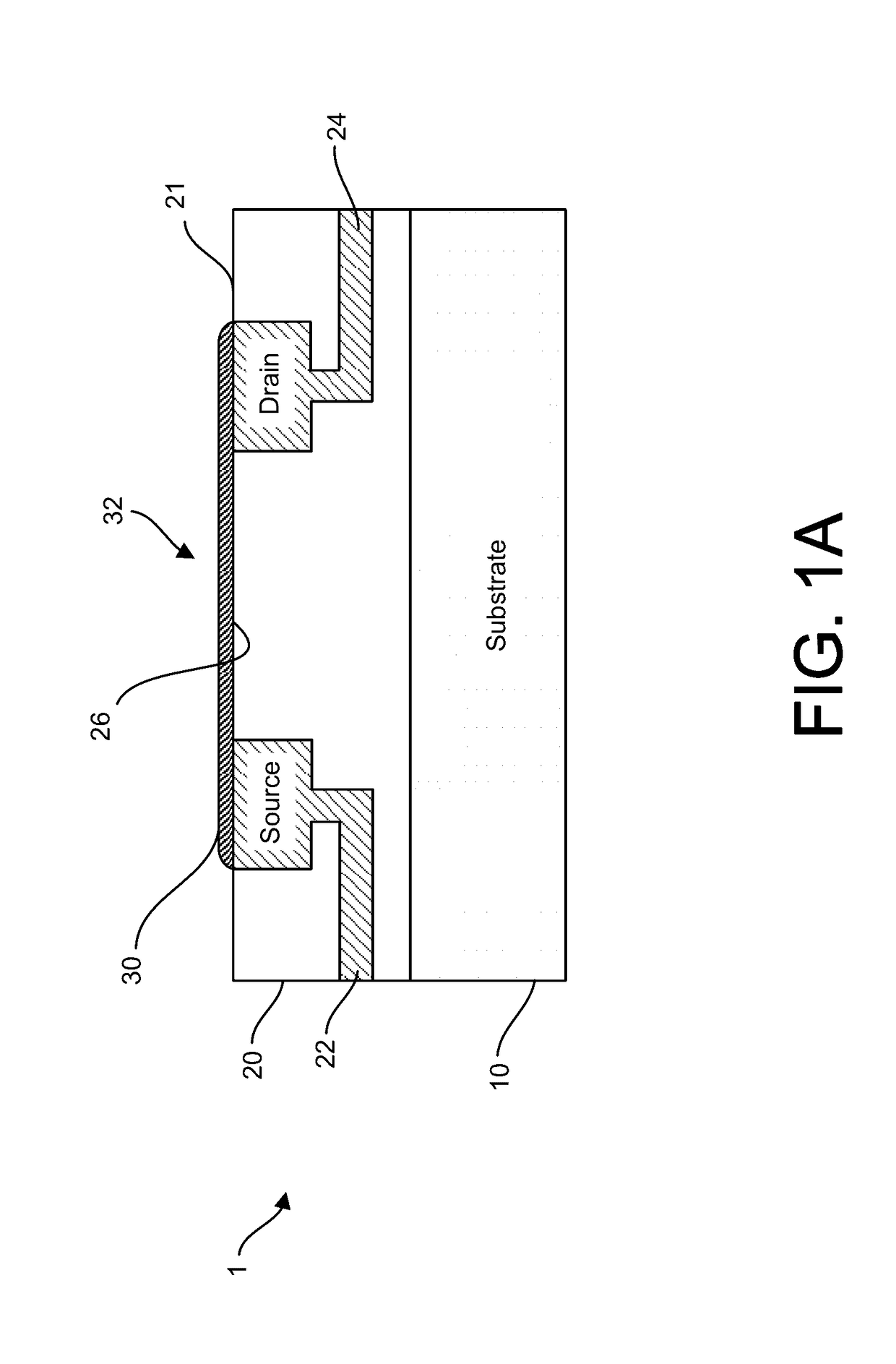Chemically-sensitive field effect transistors, systems, and methods for manufacturing and using the same
a field effect transistor and chemically sensitive technology, applied in solid-state devices, material analysis, instruments, etc., can solve the problems of large volume of required instruments for performing such high-throughput sequencing, inability to carry, and large time and effort that goes into building full-length genomic sequences
- Summary
- Abstract
- Description
- Claims
- Application Information
AI Technical Summary
Benefits of technology
Problems solved by technology
Method used
Image
Examples
example 1
Manufacture of a 2D GFET
[0477]As shown in FIGS. 34-47, in some embodiments manufacturing a well for a 2D material FET involves an organic protective layer or an inorganic protective layer.
[0478]For a well with an inorganic protective layer, PECVD oxide, LPCVD Oxide, or Nitride LPCVD are preferred, at least for the nitride, as the film has a lower stress and less tendency to crack. Most of the well depth is created by a photoresist pattern process and RIE. The final amount of well depth can be created by a wet etch process. An alternative is to deposit a thin SiN layer, then a thick SiO2 layer. The SiO2 is patterned and etched with a highly selective etch, in a preferred embodiment, SiN acts as an ESL. Then a final wet etch process is performed on the SiN from the bottom of the well. Yet another option is to use a low temperature TEOS oxide, which is a denser, less porous oxide. It prevents uptake of contaminants or reaction materials in the oxide that may affect results.
[0479]For or...
example 2
Manufacture of a 2D GFET
[0503]A preferred representative method for manufacturing a FET for chemical and biological analysis is shown in FIGS. 48-51. The method includes depositing a graphene channel on an exposed metal layer of an integrated circuit structure. The integrated circuit structure comprises a semiconductor substrate, a dielectric layer, and the metal layer. The method also includes utilizing a patterned material to expose a portion of a channel area and a plurality of adjacent areas. The method also includes etching the dielectric material starting with the adjacent areas thereby exposing a trench under the channel and exposing the metal in the channel area. The method also includes etching the metal from underneath the graphene channel to create a chemically-sensitive FET.
[0504]This method uses a full CMOS wafer with top copper electrodes exposed by CMP. In this case there is also copper in the channel area (512). A graphene layer (26) is deposited (e.g., via PECVD or ...
example 3
Manufacture of a Growth Substrate
[0520]FIG. 17 shows a flow chart of a general method of forming a semiconductor wafer with transistors having 2D material layers. FIGS. 25A-25F illustrate the various steps.
[0521]A preferred direct transfer mechanism, direct transfer fusion bonding, is shown in FIGS. 25A-25F. FIGS. 25A-25F visually show the steps of direct bond transfer via fusion bonding. In FIG. 25A, the 2D material (521), preferably graphene, is grown on a growth platform (520) composed of a platinum layer (522) on a growth wafer (523). In FIG. 2B, a cover material (524) and CMP or polish surface is deposited on the growth platform (523). In FIG. 25C, the growth platform (520) is flipped. In FIG. 25D, a ROIC wafer (525) is prepared, and the ROIC wafer (525) and the growth platform (520) are then aligned for bonding. In FIG. 25E, the cover material (524) is bonded to the ROIC wafer top insulator layer (526). In FIG. 25F, the growth substrate (527) is separated from the ROIC wafer, ...
PUM
 Login to View More
Login to View More Abstract
Description
Claims
Application Information
 Login to View More
Login to View More - Generate Ideas
- Intellectual Property
- Life Sciences
- Materials
- Tech Scout
- Unparalleled Data Quality
- Higher Quality Content
- 60% Fewer Hallucinations
Browse by: Latest US Patents, China's latest patents, Technical Efficacy Thesaurus, Application Domain, Technology Topic, Popular Technical Reports.
© 2025 PatSnap. All rights reserved.Legal|Privacy policy|Modern Slavery Act Transparency Statement|Sitemap|About US| Contact US: help@patsnap.com



